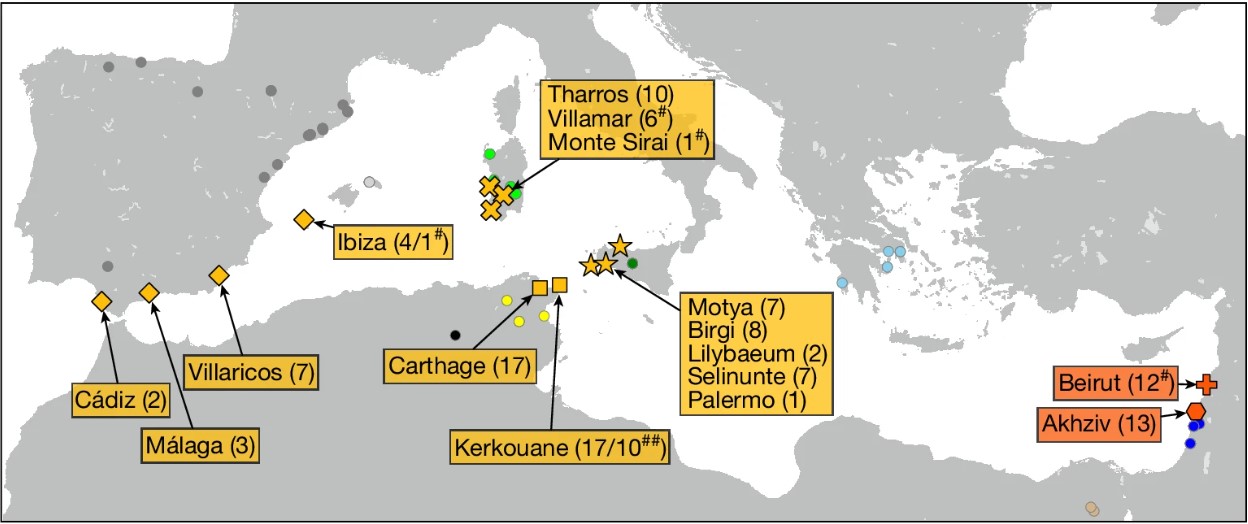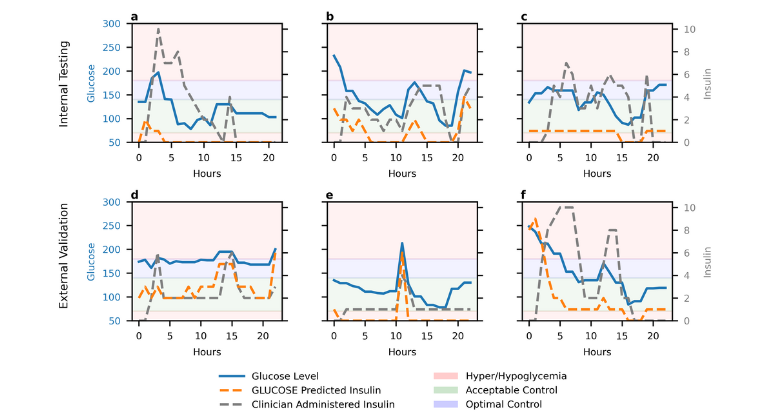2025-05-29 ブラウン大学
 This illustration depicts the locations of archaeological sites from which the research team analyzed aDNA.
This illustration depicts the locations of archaeological sites from which the research team analyzed aDNA.
<関連情報>
- https://www.brown.edu/news/2025-05-29/punic-study
- https://www.nature.com/articles/s41586-025-08913-3
プニックの人々は遺伝的に多様で、レバノン人の祖先はほとんどいない Punic people were genetically diverse with almost no Levantine ancestors
Harald Ringbauer,Ayelet Salman-Minkov,Dalit Regev,Iñigo Olalde,Tomer Peled,Luca Sineo,Gioacchino Falsone,Peter van Dommelen,Alissa Mittnik,Iosif Lazaridis,Davide Pettener,Maria Bofill,Ana Mezquida,Benjamí Costa,Helena Jiménez,Patricia Smith,Stefania Vai,Alessandra Modi,Arie Shaus,Kim Callan,Elizabeth Curtis,Aisling Kearns,Ann Marie Lawson,Matthew Mah,… David Reich
Nature Published:23 April 2025
DOI:https://doi.org/10.1038/s41586-025-08913-3
Abstract
The maritime Phoenician civilization from the Levant transformed the entire Mediterranean during the first millennium bce1,2,3. However, the extent of human movement between the Levantine Phoenician homeland and Phoenician–Punic settlements in the central and western Mediterranean has been unclear in the absence of comprehensive ancient DNA studies. Here, we generated genome-wide data for 210 individuals, including 196 from 14 sites traditionally identified as Phoenician and Punic in the Levant, North Africa, Iberia, Sicily, Sardinia and Ibiza, and an early Iron Age individual from Algeria. Levantine Phoenicians made little genetic contribution to Punic settlements in the central and western Mediterranean between the sixth and second centuries bce, despite abundant archaeological evidence of cultural, historical, linguistic and religious links4. Instead, these inheritors of Levantine Phoenician culture derived most of their ancestry from a genetic profile similar to that of Sicily and the Aegean. Much of the remaining ancestry originated from North Africa, reflecting the growing influence of Carthage5. However, this was a minority contributor of ancestry in all of the sampled sites, including in Carthage itself. Different Punic sites across the central and western Mediterranean show similar patterns of high genetic diversity. We also detect genetic relationships across the Mediterranean, reflecting shared demographic processes that shaped the Punic world.


